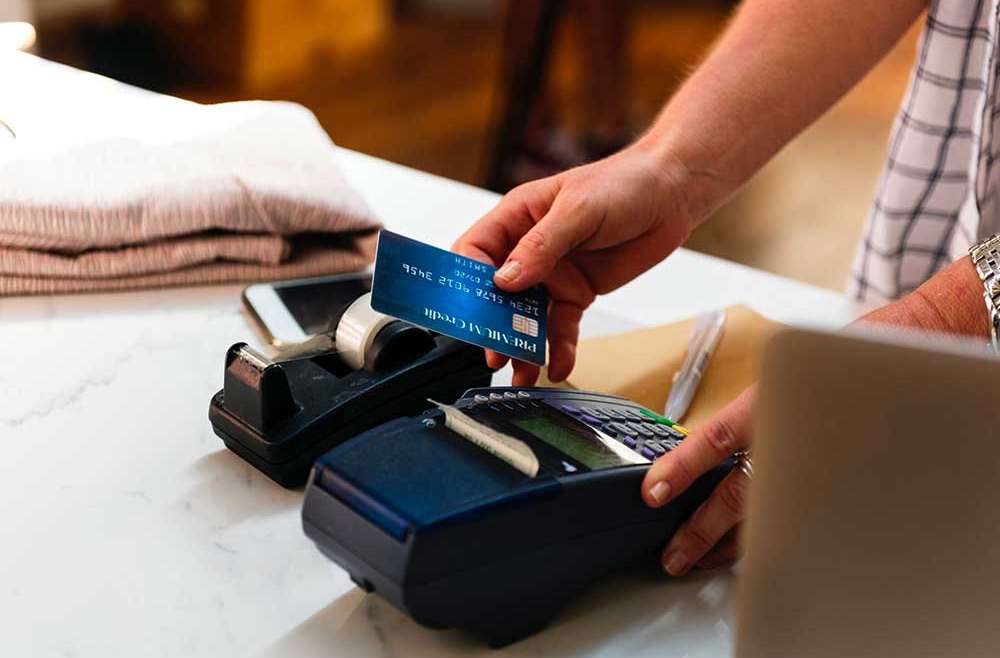Payment terminals are plentiful on the market. We're going to find several types of TPE. There is fixed TPE, mobile TPE, health TPE, portable TPE, Pinpad TPE and virtual TPE. Each model has its pros and cons. These are products that are there to meet a basic need: cashing in through a credit card. In this article, we will study them all. It will explain the different pros and cons for each model.
The fixed payment terminal
It's the oldest. Everyone knows him, both merchants and consumers. It is a payment terminal, which, as its indicates, is fixed. This means that it is connected to an electrical outlet permanently. It is not possible to use it otherwise.
The merchant cannot move into the store with this product. Indeed, it would be disconnected and the operation of the device would be zero.
It's a payment device that makes it easy to cash in money at the counter.
There are several types of fixed payment terminals:
- The fixed payment terminal connected through an IP address: it will use an Internet connection. It is a device that will use an ADSL, VDSL or fiber connection to exchange with the various servers of banks. It is also called the IP fixed TPE.
- The RTC payment terminal: this device will use the store's telephone connection. This is the France Telecom line, which is Orange now, which is going to be the medium used to communicate with banks. This RTC fixed TPE is not compatible with stores that have an unbundled line. The acronyms RTC mean Dial-up Telephone Network.
These fixed payment terminals can have several features which makes them particularly complete. Here is a short list of possible functions (hardware and software) with this TPE:
- Wi-Fi connection,
- Connect to the ethernet box,
- Not all TPEs have the color on their screens,
- Some devices are not touch-sensitive,
- The ability to have multiple payment methods (multi-par mode),
- Installing an application to read complementary software,
- Some fixed TPEs may have 3G, which can be interesting depending on the location of the store.
The pros and cons of a fixed TPE
Benefits
- It's fixed and always plugged in, with little risk of damaging it,
- Always certain to have a functional device,
- This is ideal for stores that have a fixed counter to cash in customers,
- The ability to have a SIM card and 3G is an alternative to make up for any Internet outage that is not yours.
The drawbacks
- It is not possible to travel to the heart of the store to collect money,
- It's always plugged in,
- In the event of a power outage, the unit is no longer functional.
The mobile payment terminal
It's kind of a revolution in this market. It is a small, compact and efficient device. It will suit many business leaders, regardless of the industry. Craftsmen, drivers, individual entrepreneurs who work everywhere.
They are not designed in the same way: some will have a SIM card inside their case while others will use a Bluetooth connection with their phone to use the cellular network.
Mobile PETs have several advantages and need to be highlighted.
The cost of such an object is paltry when compared with other types of TPE. You will be able to find (on our website our comparison of the best mobile payment terminal)offers at 19 euros to buy the product. It's a perfectly accessible price for an entrepreneur starting out.
These devices are mobile and portable. Nevertheless, the difference between a mobile TPE and a portable TPE is clear.
The mobile TPE is a device equipped with a SIM card or Bluetooth connection. That is, it uses the mobile network to exchange with banks and validate (or refuse) credit card payments.
This TPE can also be connected to the store's Wi-Fi network from the SIM card. This is a real plus in certain industries, such as restaurants. They can bring the bill directly to the customer's table, without having to worry about the connection.
For professionals who want to use it as a mobile payment terminal, it is the perfect object. With the SumUp Air, the SumUp 3G,the PocketSmile,the myPOS Mini and the iZettle Reader 2,you have products that are in a pocket and can be transported anywhere in France. We think of drivers who are always on the go and need to cash in by credit card. With this TPE, nothing is easier!
Models are more advanced and have a printer to edit receipts and other receipts.
Not all versions are equipped with them, but the presence of a mobile app is available. It offers advanced features to provide users with a powerful digital experience. Actors like SumUp are looking to integrate their product into the heart of a point-of-sale (TPV) terminal to replace the aging and outdated cash register.
Of course, you can accept contactless payments.
Ah, we forgot: no commitment, no monthly subscription. The TPE company will take a percentage (fixed or variable) on each transaction received by the professional. The fixed commission rate averages 1.75.
The operation of these devices is simple: you will enter the amount manually or make a basket through the mobile application. The customer will only have to put his bank card and pay.
The pros and cons
Benefits
- Cashing by credit card all over France,
- Small and compact, easy to transport,
- Compatible with mobile and Internet networks,
- Modern and innovative,
- Many bank cards are accepted, even foreign cards and contactless payment,
- The price of the terminal is very attractive,
- Performance at the rendezvous, no commitment and no monthly fee.
The drawbacks
- Some devices do not have a printer for receipts,
- Sometimes it is necessary to have a smartphone that has a cellular connection,
- Battery life may be limited,
- It is impossible to cash in abroad.
The health payment terminal
There is another type of payment terminal that is the Health TPE. It is a payment terminal that accepts both bank cards and vital cards, which are linked directly to the Primary Health Insurance Fund.
To do this, the devices must be approved to a standard that is SESAM-Vitale. This is a compliance for the billing system that belongs to the Compulsory and Complementary Health Insurance.
There may be devices that are designed only for health, but that is not the point of this article. We offer you only products that can be interesting to cash in, no matter what job you do.
These devices must be fully secure, both for exchanges with banks and for the transmission of health data.
There are two types of devices: fixed models and SIM-card models. Thus, professionals and general practitioners will be able to go to patients' homes and charge for the home visit in complete serenity.
In order for the transmission to be carried out correctly with The Health Insurance, the health care professional will have to use his computer and specific software in order to ensure that everything is transmitted to the CPAM.
The pros and cons
Benefits
- Doctors, physiotherapists, all health professionals can accept credit card payments,
- Easy and easy to use on a daily basis,
- Available in fixed and mobile versions with a SIM card.
The drawbacks
- Requires a computer connection to transmit the data to Medicare,
- The cost is relatively expensive compared to a conventional payment terminal.
The portable payment terminal
The portable payment terminal is an object relatively close to the mobile payment terminal. It can regain similar functions, although the cases are totally different.
Mobile payment terminals are available at uncompetitive costs, which is not the case with portable TPE. There are classic actors like Verifone and Ingenico.
The nickname that can be brought to the portable payment terminal is the “indoor mobile TPE”. Unlike the mobile version, these devices are equipped with Wi-Fi (and sometimes a SIM card, which can lead to confusion). They simply need Wi-Fi to work. They don't need to be constantly plugged into a base as can be the fixed TPE. On the other hand, the connection to the box delimits a certain perimeter. Unlike the mobile TPE which can use the cellular and mobile network to cash in all over France.
It will be perfect for restaurateurs who want to cash in money at a table to offer the customer the highest quality of service.
It consists of a base that is used to load the TPE. The connection with the banks is as for a fixed TPE, with the connection through the Internet box or the RTC modem (telephone cable).
Portable TPEs can be distinguished between Bluetooth and Wi-Fi. In the case of Bluetooth, the seller will have to rest the TPE on its base to validate a request for permission from the bank. In the case of the Wi-Fi model, this is not necessary. The latter is therefore more interesting.
The pros and cons
Benefits
- Can be used anywhere in the store if Wi-Fi model,
- Has good autonomy,
- The mode of operation is the same as a fixed TPE.
The drawbacks
- Is often confused with mobile TPE, and these two elements are different,
- Can't get out of the store's Wi-Fi range.
The Pinpad payment terminal
The Pinpad is not a payment terminal by definition. This is a keyboard that can be stretched at TPE. It is necessarily linked to a TPE of the same brand. A Verifone Pinpad will not be able to work with an Ingenico TPE.
The Pinpad is a keyboard that offers a better experience to the seller and his customer. The checkout is much more fluid. The seller owns the TPE on his side, between the amount of the transaction (manually or automatically with the cash register), the customer takes out his bank card and pays the payment directly on the Pinpad. The latter can accept these three methods of payment by credit card:
- By inserting the card into the card reader and typing the PIN,
- By placing the credit card on the card reader: this allows you to activate the contactless mode,
- Using his smartphone and contactless payment.
For the customer who chooses to pay by inserting the card, the Pinpads are equipped with a cache so that no one sees the numbers on which you type your PIN.
This device has only advantages for the seller and the customer. However, it is not reserved for companies that do not have an excessive flow of customers at the checkout.
The pros and cons
Benefits
- Makes it easier to flow through the checkout.
The drawbacks
- Not for all shops.
The virtual payment terminal
The virtual payment terminal is the one that is widely used at the moment. It is no longer a matter of physically using your credit card to pay an invoice on the Internet. There is no point in using a virtual Pet for a physical store. It is aimed specifically at online shops.
The goal is to use credit card data to pay for an Internet purchase.
It is a recent monetic solution. To benefit, a Distance Sale (VAD) contract must be established between the merchant and his bank. It is she who will put the device in place to authorize payments on her online shop. Only a bank can develop such a complex system.
Among the existing virtual payment terminals at present are well-known players.
All these transactions are perfectly secure thanks to the SSL which is mandatory.
The operation is basic: the user puts products in a basket, when buying it will be redirected to a bank page to insert his bank information, then the payment will be accepted (or refused). He will receive a ticket as proof of the transaction.
The pros and cons
Benefits
- Only concerns web entrepreneurs,
- Increased security,
- Reassures Internet users.
The drawbacks
- Is it useful in the face of actors like Stripe?
We have listed all types of payment terminals that currently exist. Each has its own way of functioning, sometimes with similarities. These payment terminals are all reserved for specific use. All trades (almost!) are affected.









